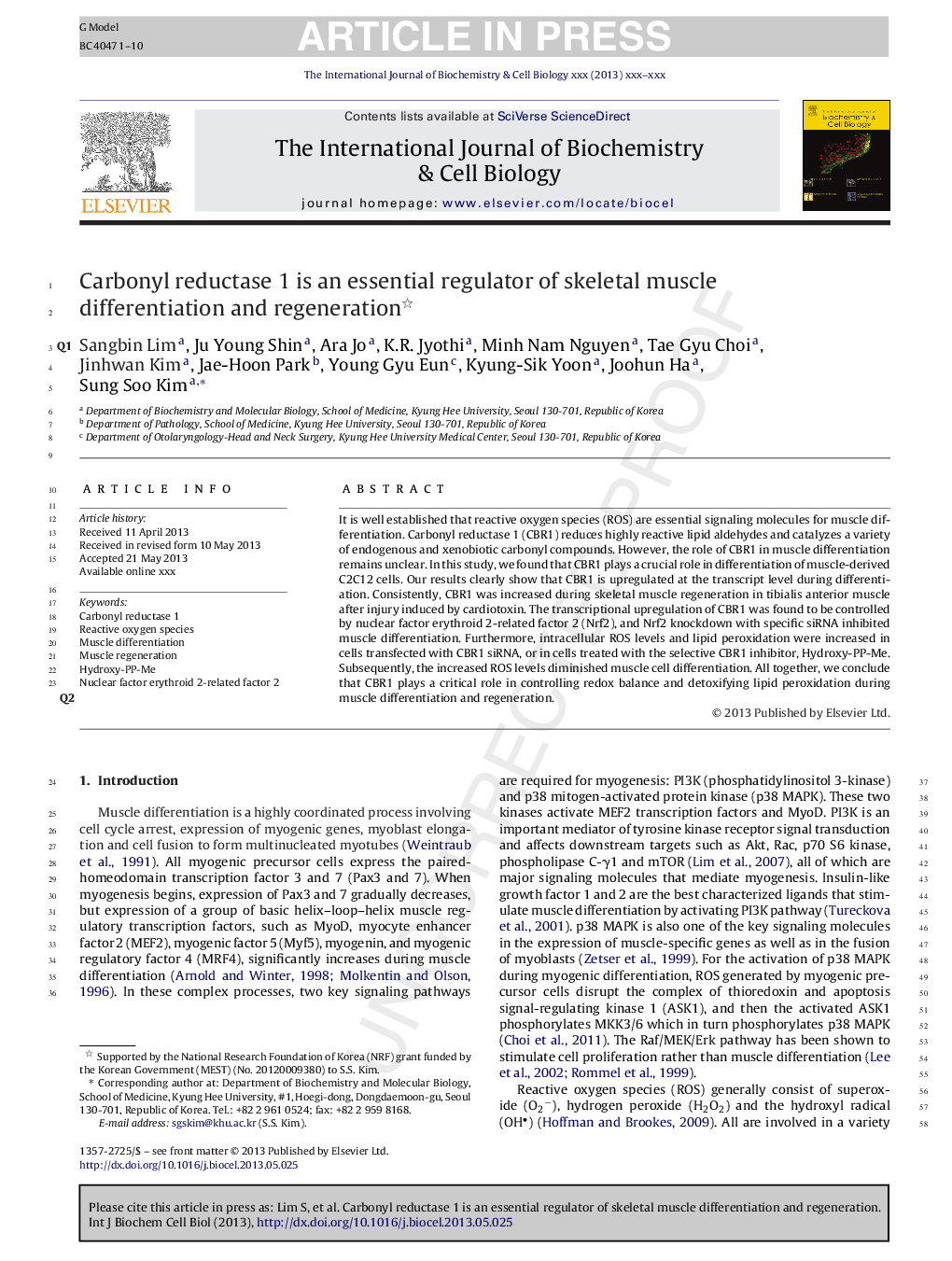| Article ID | Journal | Published Year | Pages | File Type |
|---|---|---|---|---|
| 8324090 | The International Journal of Biochemistry & Cell Biology | 2013 | 10 Pages |
Abstract
It is well established that reactive oxygen species (ROS) are essential signaling molecules for muscle differentiation. Carbonyl reductase 1 (CBR1) reduces highly reactive lipid aldehydes and catalyzes a variety of endogenous and xenobiotic carbonyl compounds. However, the role of CBR1 in muscle differentiation remains unclear. In this study, we found that CBR1 plays a crucial role in differentiation of muscle-derived C2C12 cells. Our results clearly show that CBR1 is upregulated at the transcript level during differentiation. Consistently, CBR1 was increased during skeletal muscle regeneration in tibialis anterior muscle after injury induced by cardiotoxin. The transcriptional upregulation of CBR1 was found to be controlled by nuclear factor erythroid 2-related factor 2 (Nrf2), and Nrf2 knockdown with specific siRNA inhibited muscle differentiation. Furthermore, intracellular ROS levels and lipid peroxidation were increased in cells transfected with CBR1 siRNA, or in cells treated with the selective CBR1 inhibitor, Hydroxy-PP-Me. Subsequently, the increased ROS levels diminished muscle cell differentiation. All together, we conclude that CBR1 plays a critical role in controlling redox balance and detoxifying lipid peroxidation during muscle differentiation and regeneration.
Keywords
Related Topics
Life Sciences
Biochemistry, Genetics and Molecular Biology
Biochemistry
Authors
Sangbin Lim, Ju Young Shin, Ara Jo, Jyothi K.R, Minh Nam Nguyen, Tae Gyu Choi, Jinhwan Kim, Jae-Hoon Park, Young Gyu Eun, Kyung-Sik Yoon, Joohun Ha, Sung Soo Kim,
